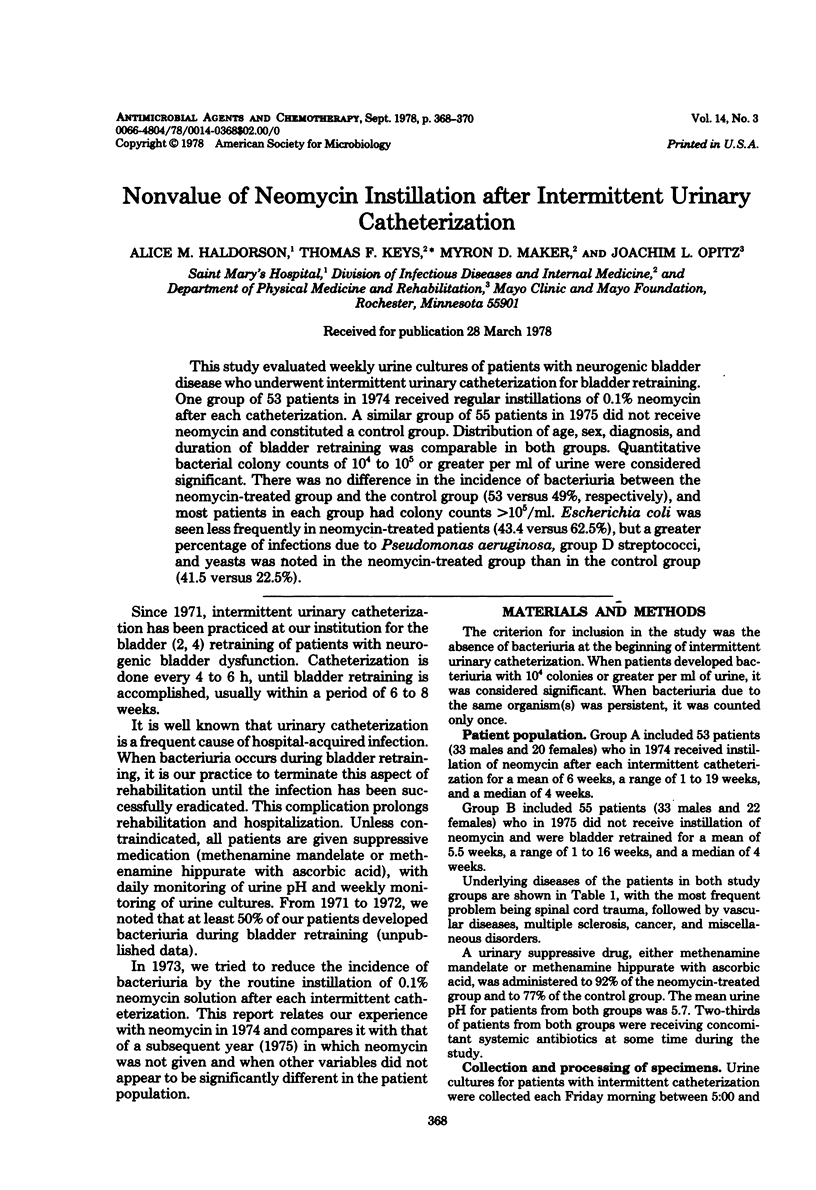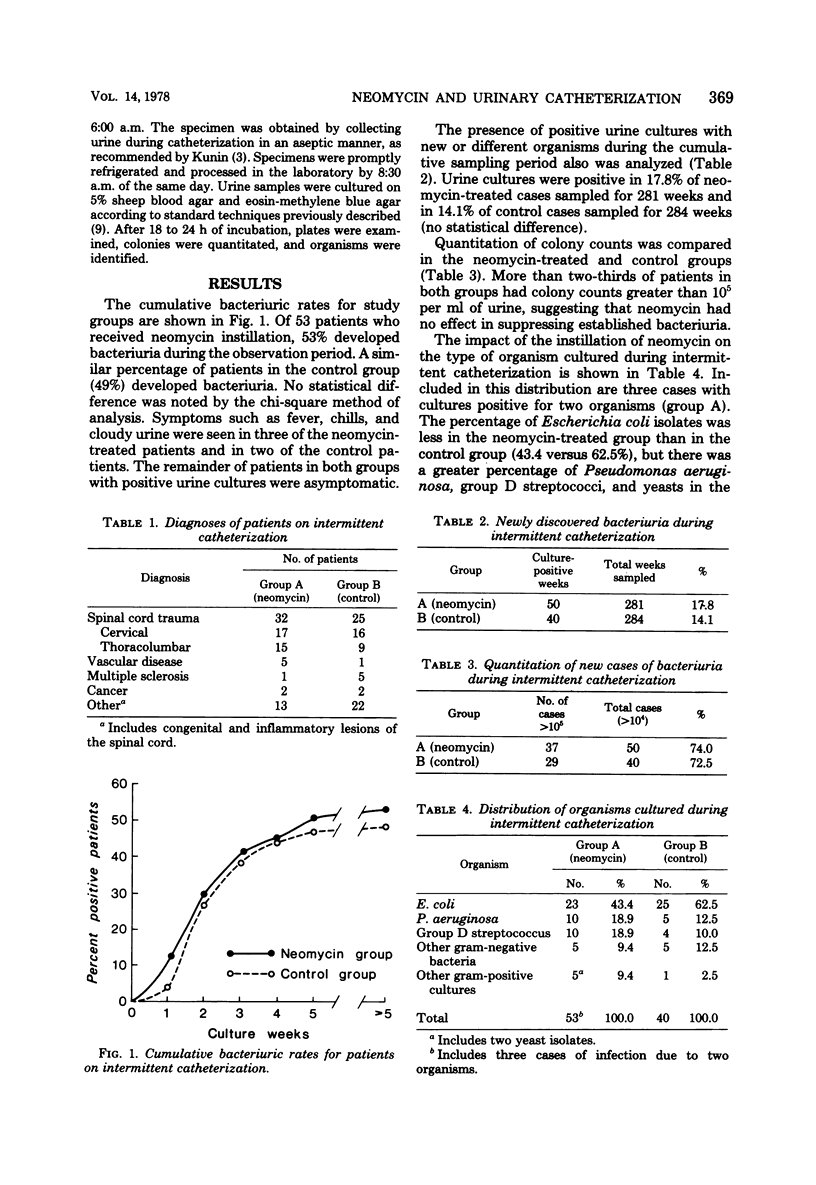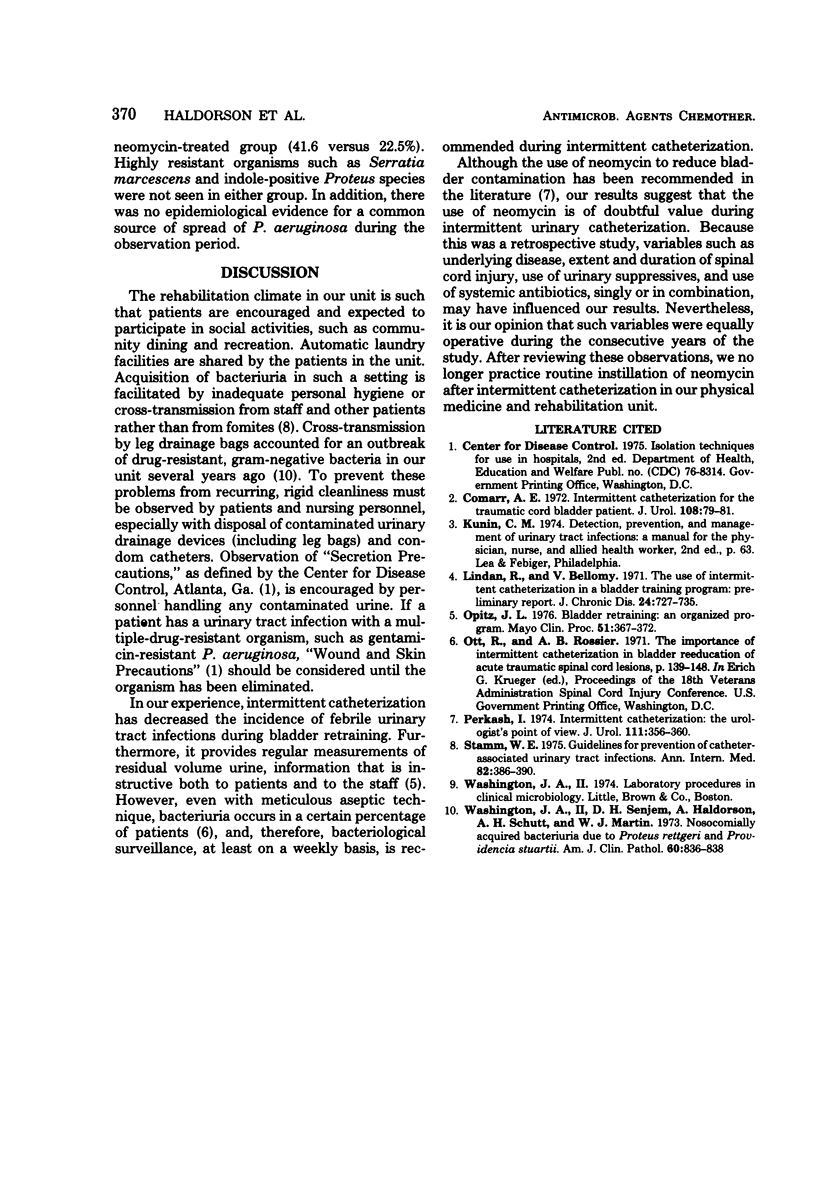Abstract
This study evaluated weekly urine cultures of patients with neurogenic bladder disease who underwent intermittent urinary catheterization for bladder retraining. One group of 53 patients in 1974 received regular instillations of 0.1% neomycin after each catheterization. A similar group of 55 patients in 1975 did not receive neomycin and constituted a control group. Distribution of age, sex, diagnosis, and duration of bladder retraining was comparable in both groups. Quantitative bacterial colony counts of 104 to 105 or greater per ml of urine were considered significant. There was no difference in the incidence of bacteriuria between the neomycin-treated group and the control group (53 versus 49%, respectively), and most patients in each group had colony counts >105/ml. Escherichia coli was seen less frequently in neomycin-treated patients (43.4 versus 62.5%), but a greater percentage of infections due to Pseudomonas aeruginosa, group D streptococci, and yeasts was noted in the neomycin-treated group than in the control group (41.5 versus 22.5%).
Full text
PDF


Selected References
These references are in PubMed. This may not be the complete list of references from this article.
- Comarr A. E. Intermittent catheterization for the traumatic cord bladder patient. J Urol. 1972 Jul;108(1):79–81. doi: 10.1016/s0022-5347(17)60645-1. [DOI] [PubMed] [Google Scholar]
- Lindan R., Bellomy V. The use of intermittent catheterization in a bladder training program: preliminary report. J Chronic Dis. 1971 Dec;24(11):727–735. doi: 10.1016/0021-9681(71)90097-x. [DOI] [PubMed] [Google Scholar]
- Opitz J. L. Bladder retraining. An organized program. Mayo Clin Proc. 1976 Jun;51(6):367–372. [PubMed] [Google Scholar]
- Ott R., Rossier A. B. The importance of intermittent catheterization in bladder reeducation of acute traumatic spinal cord lesions. Proc Veterans Adm Spinal Cord Inj Conf. 1971;18:139–148. [PubMed] [Google Scholar]
- Perkash I. Intermittent catheterization: the urologist's point of view. J Urol. 1974 Mar;111(3):356–360. doi: 10.1016/s0022-5347(17)59965-6. [DOI] [PubMed] [Google Scholar]
- Stamm W. E. Guidelines for prevention of catheter-associated urinary tract infections. Ann Intern Med. 1975 Mar;82(3):386–390. doi: 10.7326/0003-4819-82-3-386. [DOI] [PubMed] [Google Scholar]
- Washington J. A., 2nd, Senjem D. H., Haldorson A., Schutt A. H., Martin W. J. Nosocomially acquired bacteriuria due to Proteus rettgeri and Providencia stuartii. Am J Clin Pathol. 1973 Dec;60(6):836–838. doi: 10.1093/ajcp/60.6.836. [DOI] [PubMed] [Google Scholar]


